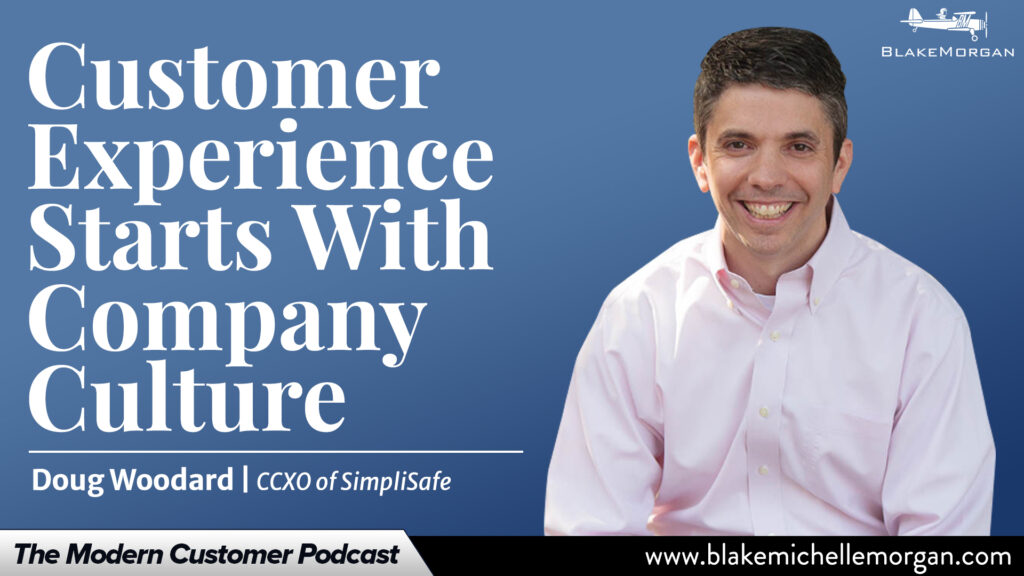When it comes to creating experiences customers remember, employees are your first line of defense.
According to Doug Woodard, CCXO of SimpliSafe, culture is transparent to customers. To create a strong customer experience, Woodard first works to create a strong company culture and employee experience.
How it feels to work at a company is also how it feels to be a customer there. If employees feel empowered and valued at a company, customers will also feel the same way. But if employees feel overworked and frustrated, those same feelings will come through to customers.
Company culture has to be intentionally designed. As Woodard says, every company has a culture—either by definition or by default. Intentionally defining the culture and the values that matter to the brand gives employees perspective and common traits to exemplify in their daily interactions. Companies that don’t design their cultures run the risk of a culture falling into place, often with traits and values that don’t match where the company wants to go.
Creating a strong culture starts by identifying the values and purpose of the brand and products. Ask yourself and your employees how you want customers to feel and how the company values can connect to customer experiences. SimpliSafe’s mission centers on helping customers make their homes safe. That feeling of reassurance and safety permeates through the company and is felt in every interaction customers have with the brand, no matter where they are on the customer journey.
A well-defined company culture creates engaged employees. Woodard says leadership also plays a large role. Engaged leaders create engaged employees who personify the company values. Leaders need to be clear about the traits they expect from employees and set the example themselves. If you want customers to be heard and valued, employees should be treated the same way by their leaders.
Before he joined the company, Woodard purchased a SimpliSafe system for his house and installed it himself so he could get the same experience as a customer. He called tech support and worked through issues to build empathy with customers. Now, as he interacts with employees and gets their feedback, he has a sense of reference for their role in the experience.
Company culture is an often overlooked aspect of customer experience. But organizations with a defined mission and purpose and engaged employees not only strengthen their cultures but also create more opportunities to connect with and serve customers.
_________________
Blake Morgan is the bestselling author of The Customer of the Future. Sign up for her new course here.

